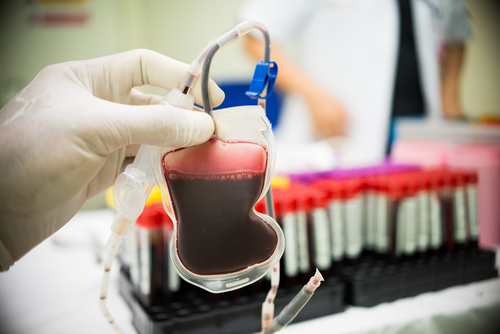Sickle Cell Disease Association, Hemanext Join to Support Programs
Written by |

Hemanext, a medical technology company, is working with the Sickle Cell Disease Association of America (SCDAA) to help people with sickle cell disease through a mix of educational programs, grassroots events, and public-awareness campaigns.
“During these very difficult times in the midst of the COVID-19 crisis, we appreciate and look forward to partnering with Hemanext to improve the lives of people with sickle cell disease and their families,” Beverley Francis-Gibson, SCDAA’s President and CEO said in a press release.
“We believe it is critical to partner with stakeholder groups like Hemanext to help garner support for such critical areas as research, public health education and patient services,” Francis-Gibson added.
Because sickle cell disease affects the production of hemoglobin, an oxygen-carrying protein present in red blood cells, patients can be given blood transfusions, particularly red blood cell units, to help ease anemia and reduce the blood’s viscosity, allowing it to flow more easily.
However, red blood cells cannot be stored for long periods without degrading. Under U.S. health regulations, these cells may be held for up to 42 days with proper refrigeration and storage, Hemanext, which specializes in blood transfusion technologies, reports on its website.
Availability of donor blood can also fluctuate with seasons, dropping over the summer months and holidays, or health crises like the current pandemic. And sickle cell patients can have rare blood types, with “the potential of less than 1% of the blood supply being a match,” the company adds.
“The volatility of the blood supply cannot be resolved solely at the donor level; it requires innovation at the processing and storage levels,” said Martin Cannon, president and CEO of Hemanext.
The main cause for the degradation of red blood cells is oxidative stress, which occurs when free radicals — unstable molecules that contains oxygen — build up and damage a cell’s proteins and other components.
Hemanext is working on ways to slow the speed at which these blood cells degrade by storing them under oxygen-depleted, or hypoxic, conditions.
“We are developing a technology that can buttress the blood supply so that it is better able to withstand external volatility while also delivering a higher-quality, more uniform blood product,” Cannon said.
The company’s technology platform, called Hemanext One, also aims to be a red blood cell replacement therapy that might reduce the number of cell units, derived from whole blood, needed to treat a patient.
“While much has been accomplished on behalf of sickle cell disease patients, we understand that more work remains in order to fully serve people living with SCD. As we continue to develop a better red blood cell replacement therapy to improve transfusions, we also are eager to partner with SCDAA, the premier sickle cell organization,” said Alex Marichal, vice president of marketing at Hemanext.
“We appreciate the opportunity to help SCDAA achieve its mission and enhance the lives of members of the sickle cell community,” Marichal added.





